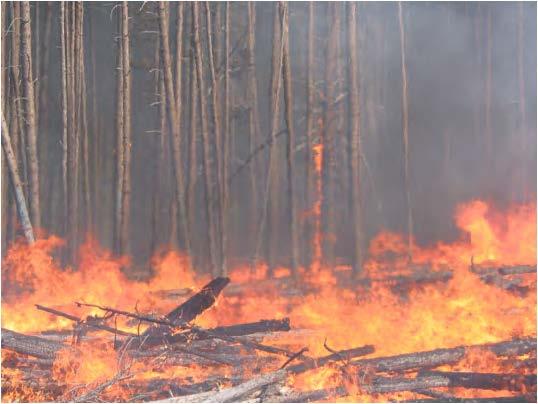 Severe fire is an important component of most fire regimes in the western United States. Approximately 85% of all western US forests fall into mixed-severity fire regimes. Historically, some forests, and parts of all fires, burned with high severity, creating a complex mosaic across the landscape. Severe fires play an essential role in the ecology of mixed-conifer forests by creating unique conditions that many plant and animal species have evolved to depend on. However, contemporary fire management is often focused on the exclusion of severe fire, and many debate about the need for severe fires into the future.
Severe fire is an important component of most fire regimes in the western United States. Approximately 85% of all western US forests fall into mixed-severity fire regimes. Historically, some forests, and parts of all fires, burned with high severity, creating a complex mosaic across the landscape. Severe fires play an essential role in the ecology of mixed-conifer forests by creating unique conditions that many plant and animal species have evolved to depend on. However, contemporary fire management is often focused on the exclusion of severe fire, and many debate about the need for severe fires into the future.
Resources listed here contain the most recent and applicable information on this issue.
Wildfires may burn with lower severity when they burn where prior fires have burned recently. For more information, see our Effects of Repeated Fires hot topic.
This hot topic was developed in partnership with the University of Idaho.
Recorded Webinars
Research Briefs
- Short-interval high severity reburns change the playing field for forest recovery
- What makes a resilient landscape? Climate, fire, and forests in the Northern Rockies
- Climatic Controls on Post-fire Ponderosa Pine and Douglas-fir Regeneration and Growth
- Inside the megafire
- Common Ground on the Role of Wildfire in Forested Landscapes of the Western US
- Assessing soil and vegetation recovery following the 2005 School Fire, Umatilla National Forest - 10-year update
- The ecological importance of severe fire - Site visits to Lolo Creek and Blue Mountain burned areas
- The beauty of a burned forest
- Listening to the message of the Black-backed Woodpecker, a hot fire specialist
- Understory recovery after low-and high-intensity fires in northern Idaho ponderosa pine forests
Syntheses
- Toward a more ecologically informed view of severe forest fires
- Challenges of assessing fire and burn severity using field measures, remote sensing and modeling
- Mapping the potential for high severity wildfire in the western United States
- Wildland Fire in Ecosystems: Effects of Fire on Flora: Chapter 2: Fire autecology
Conference Proceedings
- Spatial characteristics of fire severity in relation to fire growth in a Rocky Mountain subalpine forest
- The relation between tree burn severity and forest structure in the Rocky Mountains
- The relation between forest structure and soil burn severity
- Is forest structure related to fire severity? Yes, no, and maybe: methods and insights in quantifying the answer
Technical Reports/White Papers
- A Statement of Common Ground Regarding the Role of Wildfire in Forested Landscapes of the Western United States
- Everything You Wanted to Know About Wildland Fires in forests but were afraid to ask: Lessons learned, ways forward
- Spatial characteristics of fire severity in relation to fire growth in a Rocky Mountain subalpine forest
- The relation between tree burn severity and forest structure in the Rocky Mountains
- Wildland Fire in Ecosystems: Effects of Fire on Flora: Chapter 2: Fire autecology
- First decade plant succession following the Sundance forest fire, northern Idaho
- Smoke column height related to fire intensity
Publications
2024
2020
2016
2015
2014
2012
2009
Storymaps
Videos
Past Events
- Mar 22, 2021
- Feb 18, 2020
- Sep 12, 2017
- May 18, 2017
- May 17, 2017
- May 16, 2017
- May 15, 2017
- May 3, 2017
- May 2, 2017
- May 1, 2017
- Apr 27, 2017
- Apr 26, 2017
- Apr 25, 2017
- Apr 24, 2017
- May 21, 2014
- May 19, 2014